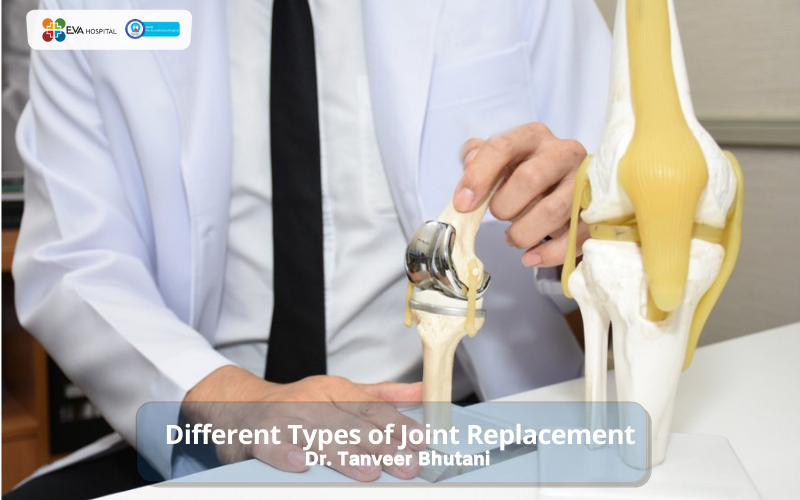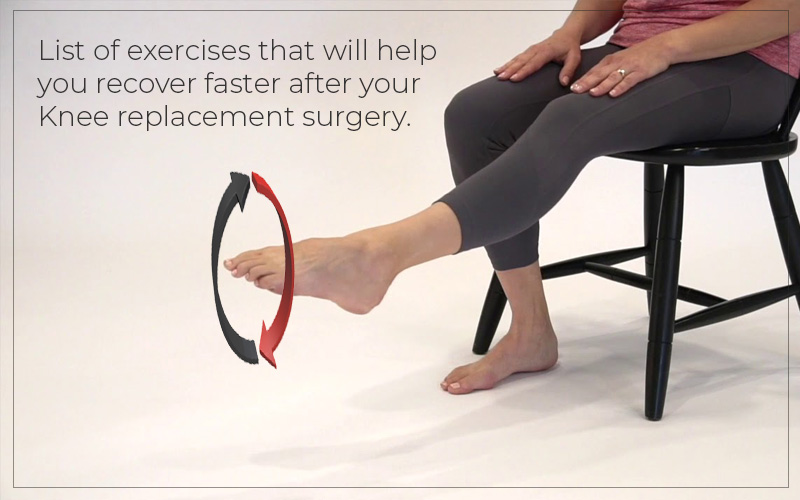
Different Types of Joint Replacement Surgeries
Introduction to the Joint Replacement Surgeries
In the human skeletal system, the point where two bones meet is known as the joint. A procedure that helps people to relieve chronic joint pain and improve joint mobility when other non-surgical treatments do not yield results is known as Joint Replacement Surgery.
Persistent joint pain and a limited range of motion is an indication to consider joint replacement surgery. It can help improve the overall quality of life and get one back to doing the things they enjoy, pain-free.
The type of joint replacement surgery suited for the patient, among different types available depends on the symptoms and the joint affected. The best Orthopaedic center in Ludhiana discusses all the options with the patient.
The knee joint can bend and straighten and is called a Hinge. The hip and shoulder joints consist of a ‘ball and socket’ where the rounded end of one fits into the hollow of another bone, enabling a rotation movement.
The presence of “articular cartilage,” and a coating of synovial fluid allows the normal joints to move smoothly Damage to this cartilage due to disease, trauma, age, reduction of the fluid makes joints stiff and painful.
When the non-surgical treatments and medications to reduce pain do not work, as the joint is too compromised, surgery becomes necessary.
The joint replacement surgery involves the removal of abnormal bone and lining structures and replacing them with new parts constructed of metal, plastic, or carbon-coated implants, which restore mobility to the joints, and are usually painless.
The Most Common Types of Joint Replacement Surgery Include:
1. Total Joint Replacement Surgery
A procedure that involves removing part or all of the damaged joint to replace it with artificial implants to improve mobility and provide pain relief is called Total Joint replacement surgery.
This type of surgery is usually needed for an arthritic or dysfunctional joint surface, usually in the knee, hip, and shoulder.
Mostly performed as a minimally invasive procedure, using smaller incisions, these surgeries have shorter hospital stays, and also a shorter recovery time than conventional joint replacement procedures.
2. Hip Replacement Surgery
Anterior Hip Replacement –
A new way to implant a hip replacement with a minimally invasive technique Anterior Hip Replacement, allows for muscle sparing instead of muscle splitting enabling a faster recovery and lesser restrictions on post-surgery activity.
Partial Hip Replacement –
Partial Hip Replacement is used more in older patients with a hip fracture where the socket is healthy and only the femoral head (the ball) and not the acetabulum (socket) is removed.
Read More:- Partial Hip Replacement Surgery
3. Knee Replacement Surgery
The largest and most complex joint connecting major limbs and bearing the total weight of the body, the knee is susceptible to multiple injuries & ailments. The portion that needs to be treated decides the option chosen for the surgery.
Partial Knee Replacement –
Divided into three compartments, the knee joint consists of (the lateral, medial, and patellofemoral compartments)A partial knee replacement is usually recommended if one or two compartments are damaged. The damaged tissue is removed in the partial knee replacement and existing areas resurfaced, implanting artificial parts into the affected compartment of the knee.
Robotic Knee Surgery –
Customized to patient’s anatomy by creating a 3D representation of the knee’s distinctive shape and profile, partial or total knee replacement surgery is conducted using a state-of-the-art surgical procedure employing the NAVIO system in Robotic Knee surgery Customized 3D-representation of the knee incorporated with robotic assistance during surgery, facilitates an accurate fit and better long-term result.
Robotic assistance is used to replace part or all of the knee joint with prosthetic implants as the robotic instruments have the capability of bending & rotating better than the human hand for enhanced precision, vision, and control. It is a minimally invasive procedure where the healthy structures surrounding the area remain unharmed.
Read More:-Total Knee Replacement- Recovery Timeline
4. Reverse Shoulder Replacement
The position of the ball and socket in the joint are switched over & replaced with artificial parts in Reverse shoulder replacement surgery
Attaching a prosthetic ‘ball’ at the shoulder blade, an artificial “socket” is constructed at the top of the upper arm bone.
The location of the ball is reversed allowing the shoulder to bypass the damaged muscles and tendon. The muscles at the top of the arm and shoulder are used instead. This leads to stabilizing the shoulder joint and restoring pain-free motion and function.
Afterword
Different types of Joint Replacement Surgeries are helping people restore mobility and lead pain-free lives. The latest State of art techniques has made great innovations in surgeries with shorter hospital stays and faster recovery periods.
At EVA hospital, Dr. Tanveer Bhutani uses the latest techniques for all orthopedic needs including joint replacement surgery helping patients of all ages experiencing musculoskeletal and joint dysfunction or injuries to be treated successfully.









